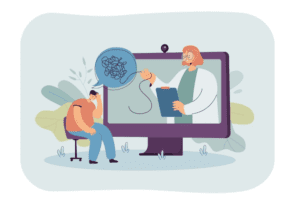Breathing Techniques
This article has been researched and written by Yassine Tayie. AI has not been used in producing this article.
Breathing has always played a central role in body-centered healing techniques such as meditation and yoga. It can also be found across various cultures and spiritual practices. On a less esoteric note, science has also shown interest in the subject, and studies have highlighted various positive effects of regular breathing exercises. Several studies (Laborde et al., 2017; Tharion et al., 2011; Lehrer et al., 2003) have shown the benefits of breathing techniques. Today, I’ll share with you two techniques that stands out:
1. The 365 Method – also known as cardiac coherence
This technique is simple to integrate into your routine. Its main goal is to activate your parasympathetic nervous system, which calms the heart rate, lowers cortisol levels (the stress hormone), and improves your ability to process emotional information.
Known benefits include:
- Reduction in stress and anxiety levels
- Improved emotional regulation and mental clarity
- Better sleep quality
- Lowered blood pressure
- Enhanced heart rate variability (HRV), a marker of resilience
- Improved focus and cognitive performance
How to practice it:
- 3 times a day
- 6 breaths per minute → Inhale slowly for 5 seconds – hold for 1 – exhale slowly for 5 seconds
- For 5 minutes
I usually recommend doing it in the morning, midday, and evening. But the important part is adapting it to your lifestyle — you can practice it while walking to work, during a lunch break, or before sleep. What matters most is consistency.

2. The Wim Hof Method
You’ve surely heard of this popular gentleman who enjoys swimming in icy water. That alone sparked scientific curiosity, leading to the well-known Kox et al. (2014) study at Radboud University Medical Center in the Netherlands, which found that applying the WIMHOF method leads to:
- Reduced inflammation and improved immune response
- Better stress resilience and nervous system regulation
- Enhanced mood, focus, and cold tolerance
How to Apply the Wim Hof Method?
1. Breathing
- 30–40 deep breaths (inhale fully, exhale passively)
- After the last exhale, hold your breath as long as is comfortable
- Inhale deeply, hold for 15 seconds, then release
- Repeat for 3–4 rounds
2. Cold Exposure
- Start with cold showers, gradually increase duration
- Only progress to ice baths once you’re adapted—and always with caution
3. Mindset
- Stay calm and focused – consistency is key
To summarize :
- Cardiac Coherence (365) tends to bring a quiet kind of calm — a sense of slowing down, grounding, and softening. It’ s not dramatic, but the effects build over time. Clients often tell me they feel more centred, less reactive, and more able to stay present in their day. It’ s simple, discreet, and gently restores balance — like resetting your inner rhythm.
- Wim Hof, on the other hand, is a more intense experience. It wakes you up — physically and mentally. Many describe a rush of energy, light-headedness, and even a sense of power or control. There ’ s something raw and physical about it, especially when you add cold exposure. It’ s great for those looking to challenge themselves, feel more alive, or push through mental or emotional blocks.
Bear in mind these tips are for support, initiation. They are not cures, but they can help enhance your mood and widen your window of tolerance. Nothing, however, replaces a deep therapeutic work.
Health Effects of Untreated Depression
It’s very common to feel sadness at one point or another in our life. Depending on your specific circumstances, you may even feel …
Psychologists vs. Psychiatrists – What’s the Difference?
Clients shouldn’t have to jump through hoops to understand who the perfect candidate is for treating their emotional and/or behavioral struggles. Yet, understanding the type of provider you should see during …
Gentle Parenting: What is it and How to Try it Yourself
When it comes to raising children, no one has all the answers. Every parent and child have unique challenges and needs. Navigating these individual circumstances along with ever-changing environments, such as school …
How to Improve Your Relationship with Your Children – A Psychologist’s Guide
The modern family’s lifestyle leaves us shuffling from school to sports practice, family events, visiting friends, and everything in between. As society evolves to become more on-the-go and technologically advanced, w…
Tips for Communicating With Someone Who is Depressed
Knowing what to say to someone who is struggling with depression can be challenging. Perhaps you are afraid you might say the wrong thing. Or maybe you will say something that makes their day even worse? Maybe you fee…
Who Can Benefit From Couple Counseling?
Relationships are far from perfect. Each person brings his or her own ideas, values, opinions, and personal history into a relationship, and they don’t always match their partner’s. Those differences don’t necessaril…
What is EMDR Therapy and How Does it Help People?
Since the days of Freud, we’ve come to expect that managing our trauma is a lifelong journey. However, this is not the case. Eye Movement Desensitization and Reprocessing therapy (EMDR therapy) was developed in 1990 …
Everything You Need to Know About Couples Therapy
It’s perfectly expected for couples in relationships to face challenges from time to time. Every relationship has its unique needs and challenges. Couples see therapy for a number of unique reasons. From miscommunicat…
Does Social Media Cause Depression?
According to recent estimates, roughly 4 billion people worldwide use various social media platforms, including Facebook, Twitter, Instagram, and LinkedIn. It’s not hard to believe. When you take a look around a crowd…
Child Development: Play Therapy in Dubai
Every child deserves to feel safe, empowered, understood, connected, and loved. Play therapy is based on the foundation of providing a safe environment for children to process their emotions and develop the social, em…











